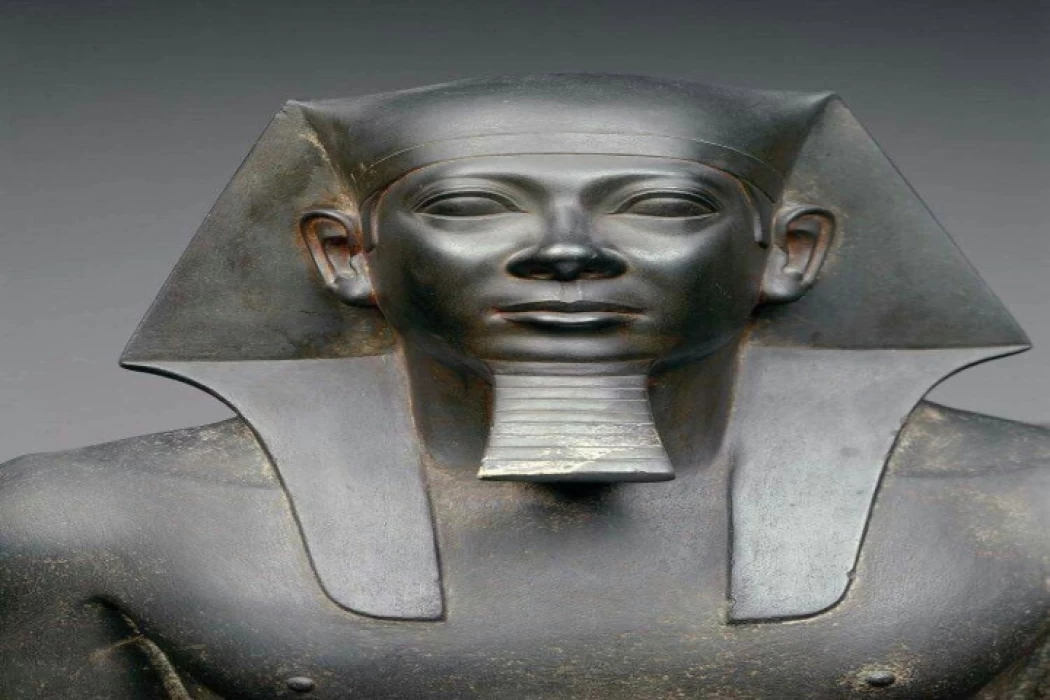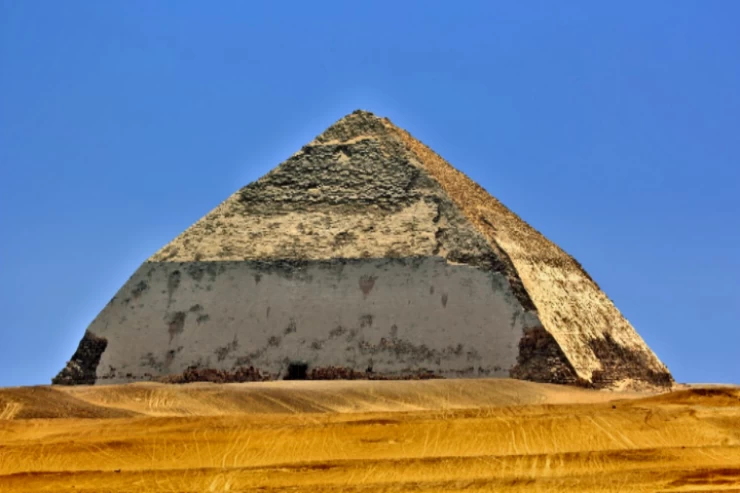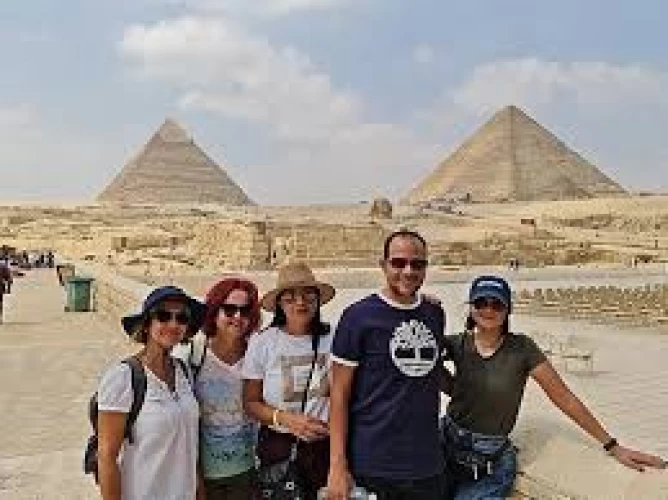
King Menkaure | Mycerinus
Facts King Menkaure
The death of King Khafre paved the way for King Menkaure (likely the son of King Khafre) to rule Ancient Egypt for 18 years or a little more, making him the fifth king of the Fourth Dynasty.
King Menkaure succeeded his “father” in power, and the Greek historian “Herodotus” praised him more than any other king, describing him as preceding in his justice all previous kings, King Khafre, who left to him the quarrels that were between him and the sons of the “Daf-Ra” dynasty.
As soon as King Menkaure ruled Ancient Egypt, he married his sister, the second princess Kha Merar Nabti, with whom he fathered his successor to the throne, Shepses Kaf, who completed the pyramid set of his father, who died before it was completed.
King Menkaure was unable to complete his pyramid complex, as he passed away before many of the pyramid's granite cladding blocks could be polished. The funerary temple and the private valley temple were supposed to consist of huge blocks of granite-clad limestone, but were actually built using white adobe bricks.
The king who was mistakenly called “Menkaure” did not follow in the footsteps of his predecessors during the construction of his pyramid, he did not use the same material that his ancestors used to build the outer shell of the pyramids, which is limestone, and used granite material brought from Aswan, which was much more difficult than limestone in shipping and transportation.
Only the lower quarter of the pyramid is covered with granite, while the rest of the pyramid was covered with limestone, a matter that sparked controversy in Egypt during the past period after the Supreme Council of Antiquities, with the participation of an Egyptian-Japanese mission, decided to start a project to study and document the granite blocks of the Mankhaura pyramid that represent its outer cladding.
In the Egyptian language, the Pyramid of Menkaure was referred to as "Netjer-er-Menkaure," or "Menkaure is divine." This refers to the king for whom this pyramid was constructed to serve as a tomb for his afterlife.He is the builder of the third greatest pyramid in the Giza Necropolis, which ended a great era of architectural magnificence. The Pharaoh is considered to be the son of King Chephren and Queen Khamernebti I. He got married young to his sister, who had become the future queen, Khamernebti II. She bore him a son called Khunre, who probably died at a very young age.
Menkaure was the king who built the third pyramid; in ancient Egyptian, "Netjer-er-Menkaure," "Menkaure is Divine," is what this king's pyramid was referred to in the ancient Egyptian tongue. It is also the termination point in monumental constructions at Giza for a pyramid meant as an afterlife tomb. Menkaure, also called Mycerinus, was born of King Khafra and Queen Khamernebti I. He married Khamernebti II, who became a queen after having a son who was named Khunre and who likely died young. His other son was called Shepseskaf, who succeeded him, and one daughter, Khentkaus I, who probably married Userkaf, the first king of the Fifth Dynasty. No predecessor of Menkaure had ever been rated as wise and benevolent king by the populace, and as such his pyramid was not of much greater size.
However, one could say that the scaling down probably had no solid reason backing it; rather, speculations from a few commentators could turn the economy over it, or that some changed religious ideas that increasingly put funerary temples above erectile pyramids, or even too rigid as the Giza Plateau started to get crowded. The pyramid remained incomplete on the death of Menkaure, as it was finalized under Shepseskaf; the upper part was clad in fine limestone while the lower portion remained harsh granite. Cairo Top Tours will take you on an exceptionally interesting trip to the Pyramids of Giza, including the stunning Great Pyramid of Khufu, the awe-inspiring Pyramid of Khafra, and the notable Pyramid of Menkaure. Also to be appreciated will be the Great Sphinx, the immortal guardian to all within the necropolis. All this will be under the guidance of expert guides who will inform you of the history, culture, and traditions of ancient Egyptians while giving you the perfect possible chance to capture moments to remember at these historic sites.
One could say that scaling down had no solid reason to back it; merely speculation from a few commentators could turn the economy about, or that some changed religious ideas increasingly placed funerary temples above pyramids in terms of erection, or else too rigid as the Giza Plateau began to get crowded. The pyramid was left incomplete at the death of Menkaure and was seen through to completion under Shepseskaf; the upper part of this was clad in fine limestone, while the lower slots were left in rough granite. A trip to Cairo Top Tours promises a high-interest overview of the Pyramids of Giza, including the stunning Great Pyramid of Khufu, the awe-imposing Pyramid of Khafra, and the noteworthy Pyramid of Menkaure. Also included will be the Great Sphinx, an everlasting guardian of all in the necropolis. All this will be under the experienced guides who will narrate to you the history, culture, and traditions of ancient Egyptians while giving you the best possible chance to capture moments to immortalize at these historical sites.
There is no solid ground for this scaling down, but some commentators suggest that it is due to economic reasons, that or some changed religious outlook now putting funerary temples above pyramid size, or due to practical reasons as the Giza Plateau started getting crowded. The pyramid remained unfinished upon Menkaure's death and was completed by Shepseskaf, with its upper part clad in fine limestone while the lower portion was left in rough granite. Cairo Top Tours will take you on a really interesting journey to the Pyramids of Giza, including the wonderful Great Pyramid of Khufu, the majestic Pyramid of Khafra, and also the famous Pyramid of Menkaure. You will also be privileged to admire the Great Sphinx, the immortal guardian of all within the necropolis. All this should be done under the guidance of expert guides who will inform you about the history, culture, and traditions of ancient Egyptians while giving you a chance to capture moments to remember at these historic sites.

















